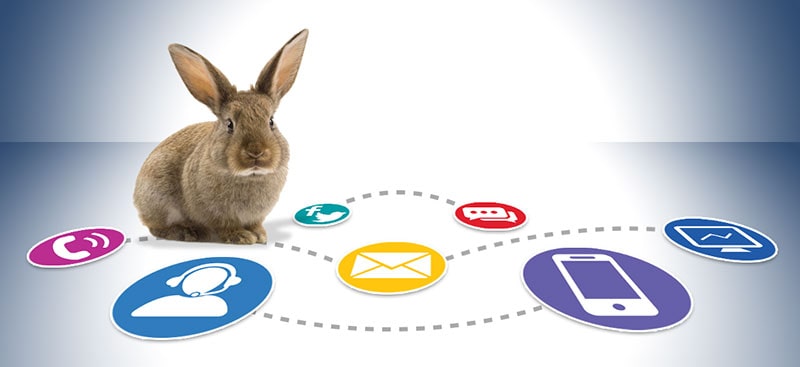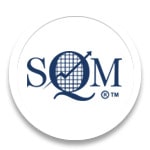
Most Customers Do Not Like to Channel Hop
SQM’s groundbreaking research shows how customers navigate an organization’s contact channels when resolving an inquiry or problem. For example, the below diagram shows contact channel volume distribution and the second channel customers use when they need to contact the organization again to resolve the same inquiry or problem.
The first revealing finding is that of all the core contact channels (i.e., call center, web self-service, IVR self-service, and email), the call center channel has the highest contact volume at 40%. The web self-service channel volume is second highest at 28%. This volume is growing substantially, with the likelihood of surpassing the contact volume for the call center in the near future.
The second revealing finding for the industry is that the vast majority of customers who start in one contact channel do not like to channel hop to resolve the same inquiry or problem. Instead, if a customer’s inquiry or problem is unresolved and they have to contact the organization again, most customers will go back to the first channel they used.
In fact, when a second contact was required to resolve the same inquiry or problem, customers using the same channel is the following: the call center channel was 93%, the web self-service channel was 79%, the IVR self-service channel was 82%, and the email channel was 85%. Thus, in most cases, when a customer used another contact channel to resolve the same inquiry or problem, it resulted from the initial contact channel’s failure and not because the customer wanted to use another channel.
However, when a customer uses a second channel to resolve their inquiry or problem, the call center is by far the channel of choice. This is because the call center handles complex inquiries and problems that the other contact channels cannot resolve. In addition, the pattern of using the same channel to resolve an inquiry is highest by far with the call center channel.
A best practice for measuring the customer’s experience when using a single channel, or multiple channels, to resolve their inquiry or problem is to conduct a post-contact survey within 24 hours of using a channel.
The metric SQM recommends to measure customer experience using contact channels is the One Contact Resolution (OCR) metric. OCR is defined as the percentage of customers who resolved their inquiry or problem on their first contact and did not use another contact channel before or after using a specific contact channel. Thus, a simple way to think about OCR is ‘one contact and one channel.’
OCR is the measure that matters most for organizations who want to deliver on what customers expect, which is to be able to resolve their inquiry or problem in one contact using only one contact channel. Thinking about this in practical terms, customers do not wake up in the morning and say, “I want to use two contact channels to resolve the same inquiry or problem.” So, if an organization wants to deliver on what customers expect, they need to be great at One Contact Resolution!
Quick Related Links
First Call Resolution Definition First Call Resolution PPT First Call Resolution Benefits
First Call Resolution Strategies First Call Resolution Operating Philosophy First Call Resolution Formula Contact Channels What is a Good FCR Rate? One Contact Resolution Channel Hopping Top 10 Contact Channel CX Metrics

